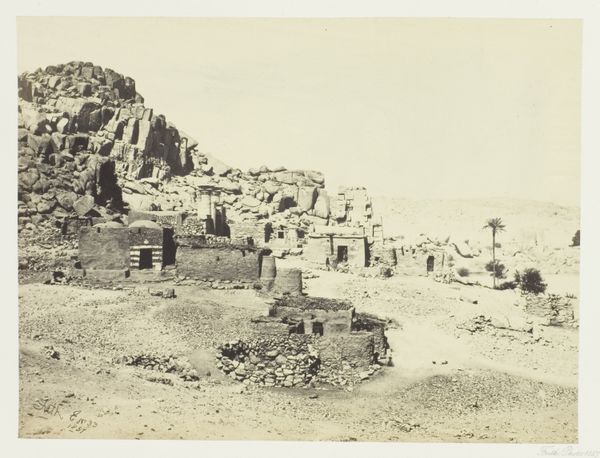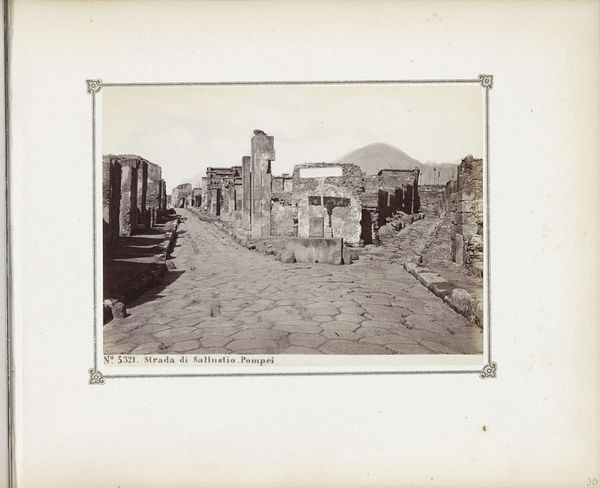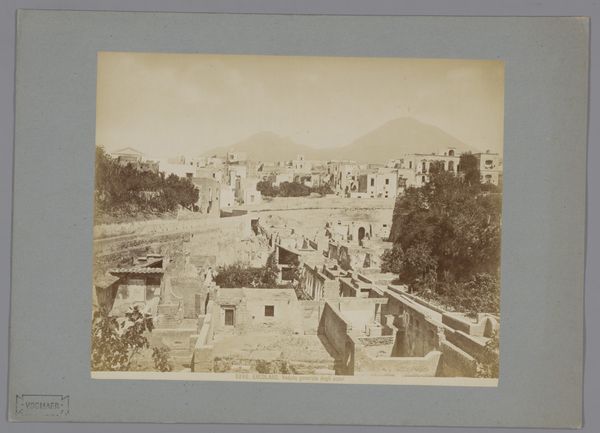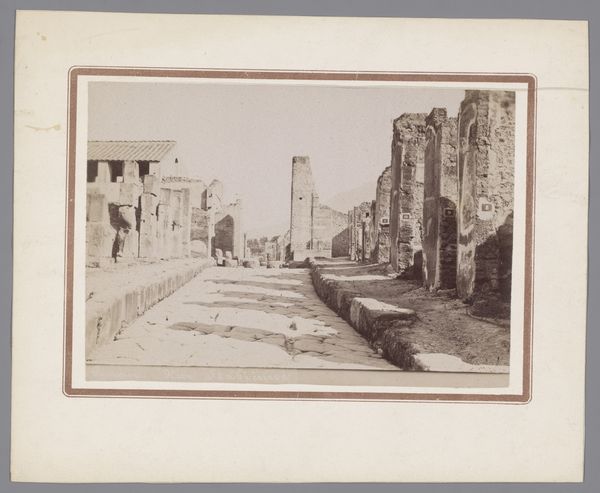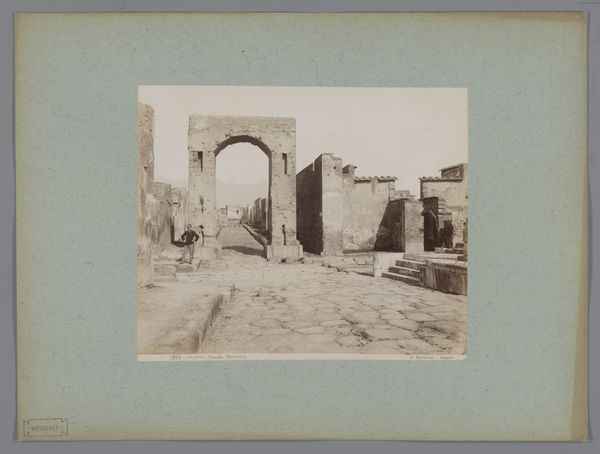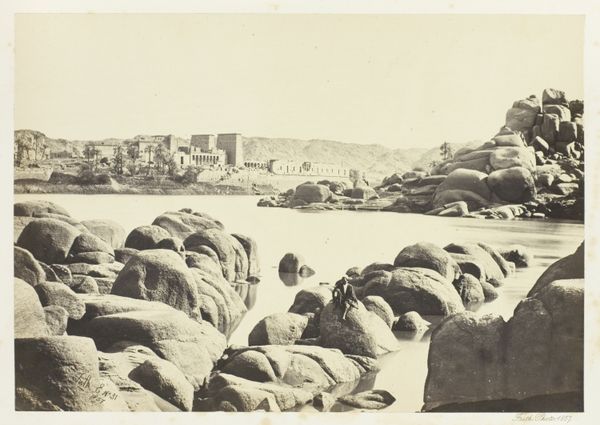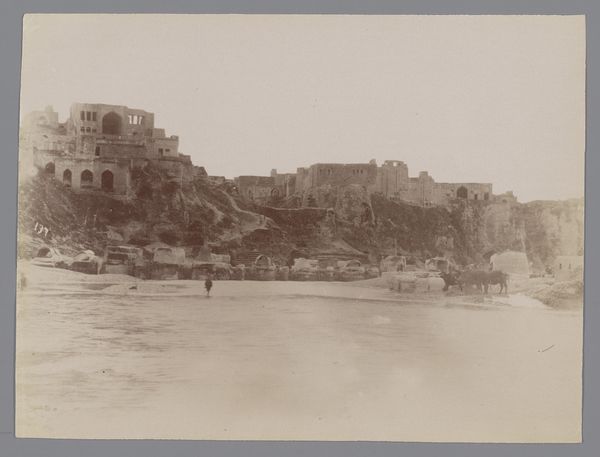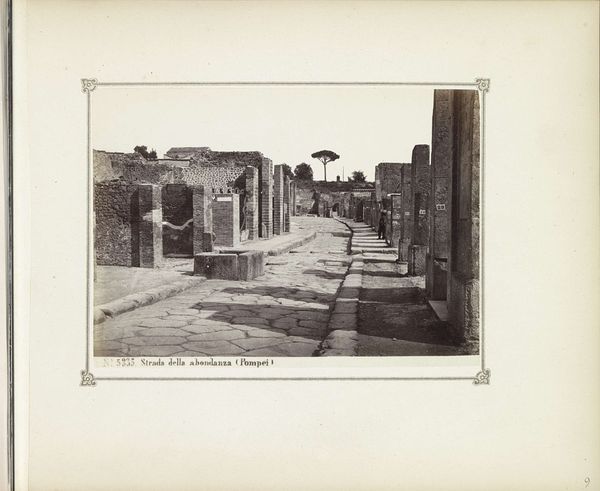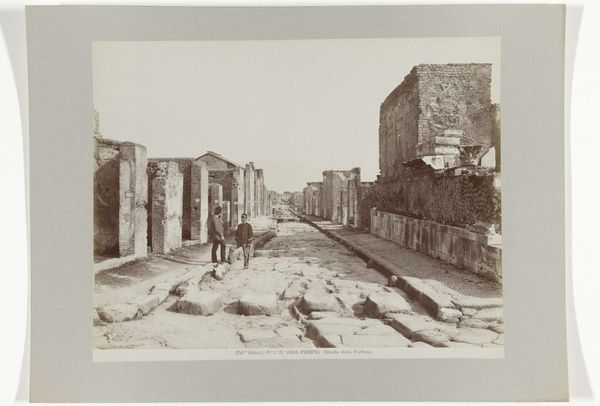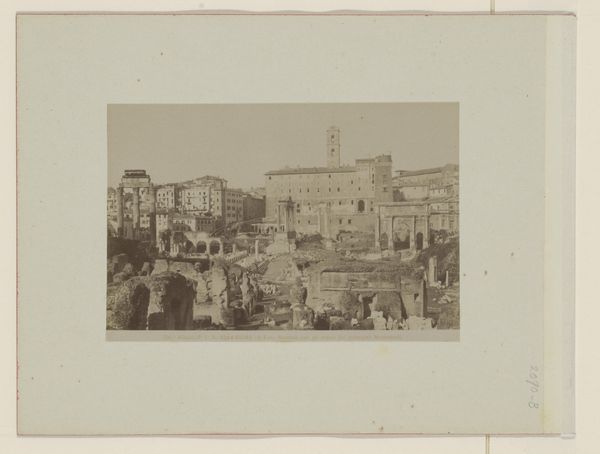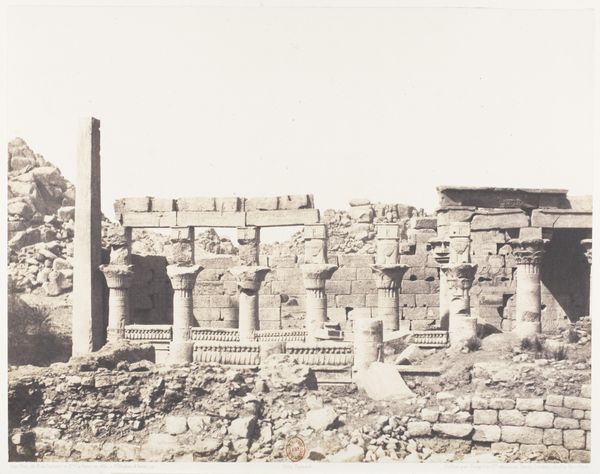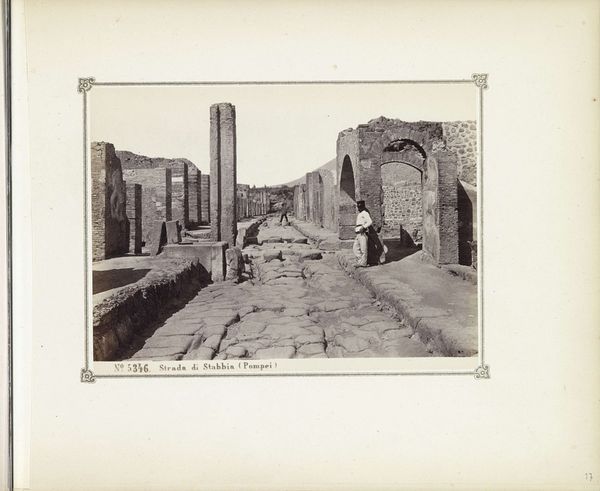
photography, gelatin-silver-print
#
landscape
#
photography
#
romanesque
#
ancient-mediterranean
#
gelatin-silver-print
#
cityscape
Dimensions: height 198 mm, width 248 mm, height 241 mm, width 328 mm
Copyright: Rijks Museum: Open Domain
Curator: Welcome to the Rijksmuseum. We're standing before a gelatin-silver print dating from around 1880-1895, titled "Ruïne van het colosseum op de Monte Palatino," created by the photography firm Fratelli Alinari. Editor: What immediately strikes me is the overwhelming sense of history and the sublime, I see not only loss and ruin, but the persistence of symbols that resonate through time. The cool greys add to that feeling. Curator: Indeed. Alinari's image presents a sweeping cityscape of the ruined Colosseum as seen from Palatine Hill in Rome. This location itself is quite strategic, the Palatine being historically the most central of the seven hills of Rome, and overlooking both the Forum and the Circus Maximus. The Colosseum becomes framed as a monument embedded within a layered history of power. Editor: Absolutely. The ruins of the Colosseum act as a potent reminder of impermanence. And water features in ancient Roman culture held significant symbolic weight. It speaks of purification, life, and rebirth and this association would have been deeply embedded in the Roman psyche. To photograph the Colosseum ruins adjacent to remnants of ancient bathing ritual elevates the symbol. Curator: It's interesting to think about Alinari's work here in the broader context of late 19th-century European cultural fascination with classical antiquity. Photography served as a powerful tool for documenting and disseminating these grand, historical sites to a wider audience, reinforcing a specific narrative of Western civilization and its roots. Editor: But also perhaps speaking to something even more foundational to the human psyche: an acceptance of death, or ruin, that opens our souls. It is very powerful indeed. Curator: I think that's a perceptive observation. And that interplay is probably something the Fratelli Alinari photographers, whether consciously or unconsciously, wanted to provoke in its viewers. Editor: So, on reflection, this image isn’t just a historical document; it’s a cultural artifact reflecting a complex engagement with history, memory, and symbol. Curator: I would completely agree. Alinari's lens captures the Roman ruins not just as they physically stood, but also the weight of its social and cultural meaning to a society grappling with the past in the late 19th Century.
Comments
No comments
Be the first to comment and join the conversation on the ultimate creative platform.
